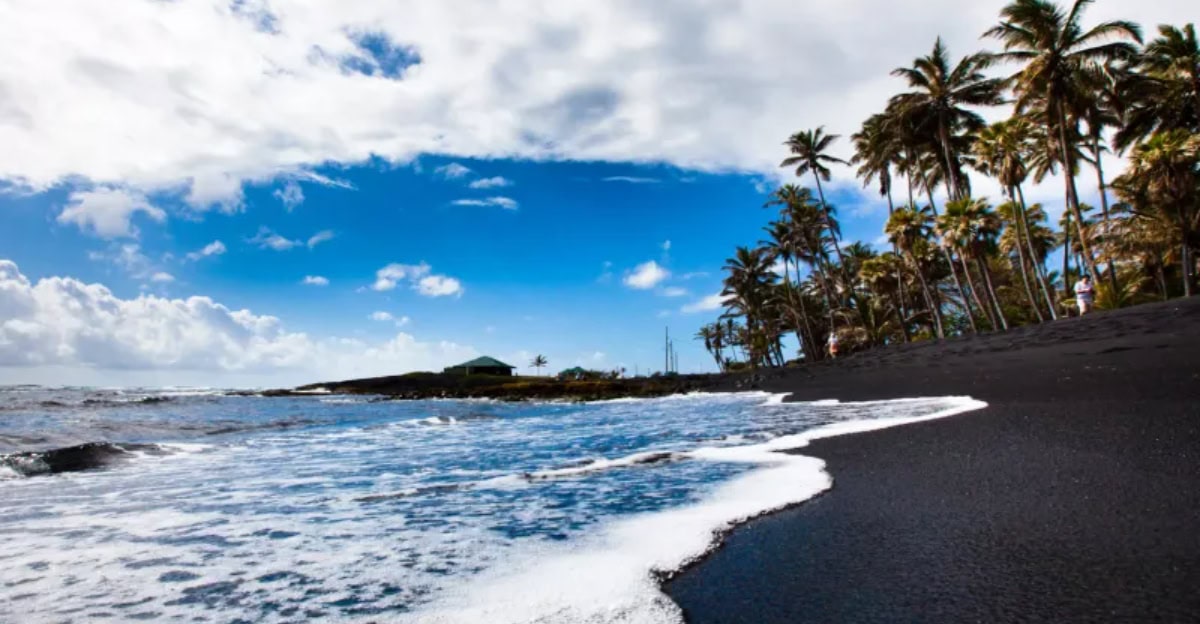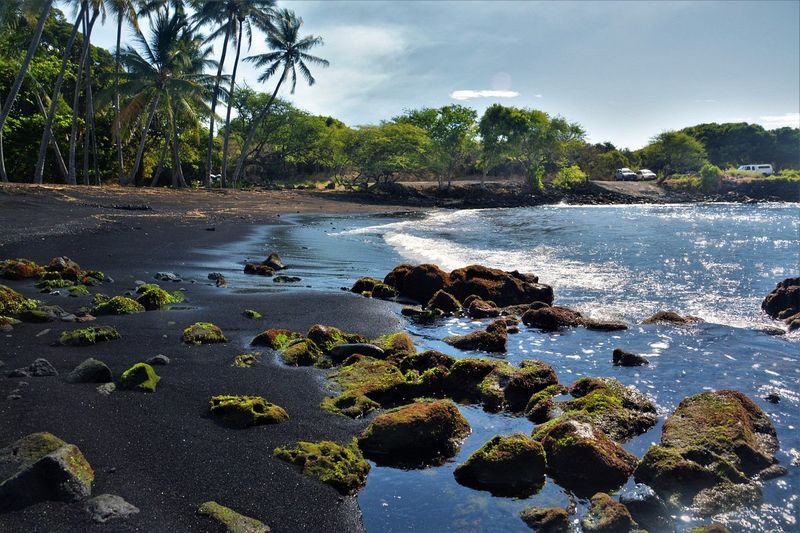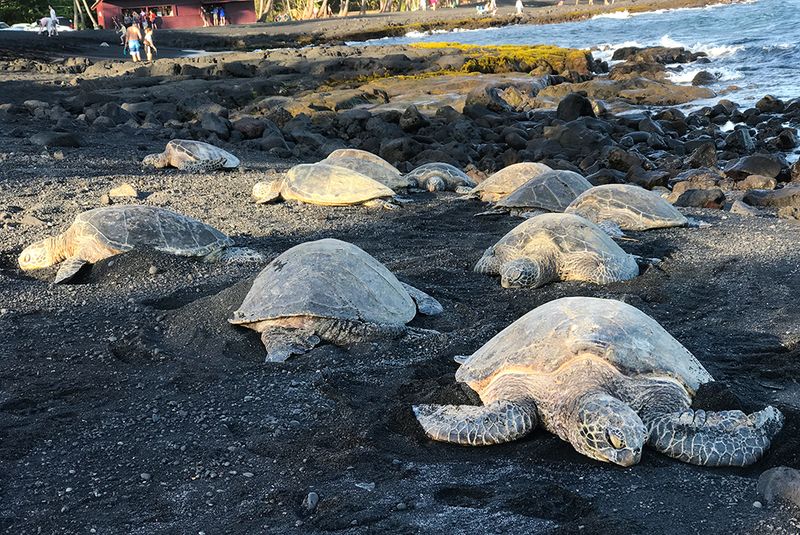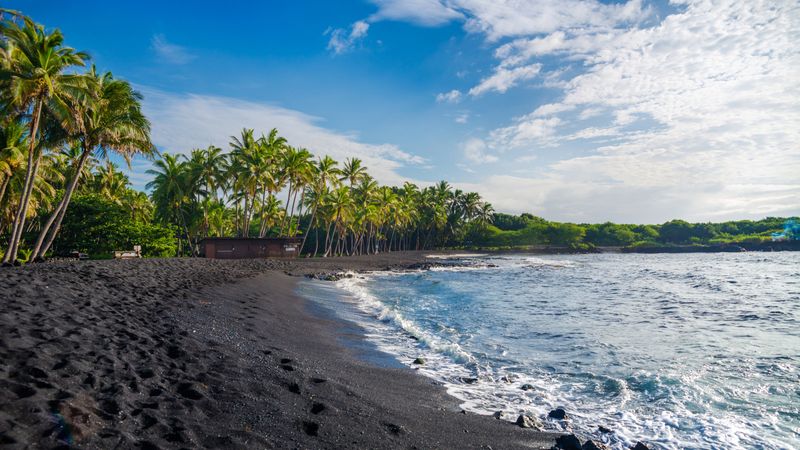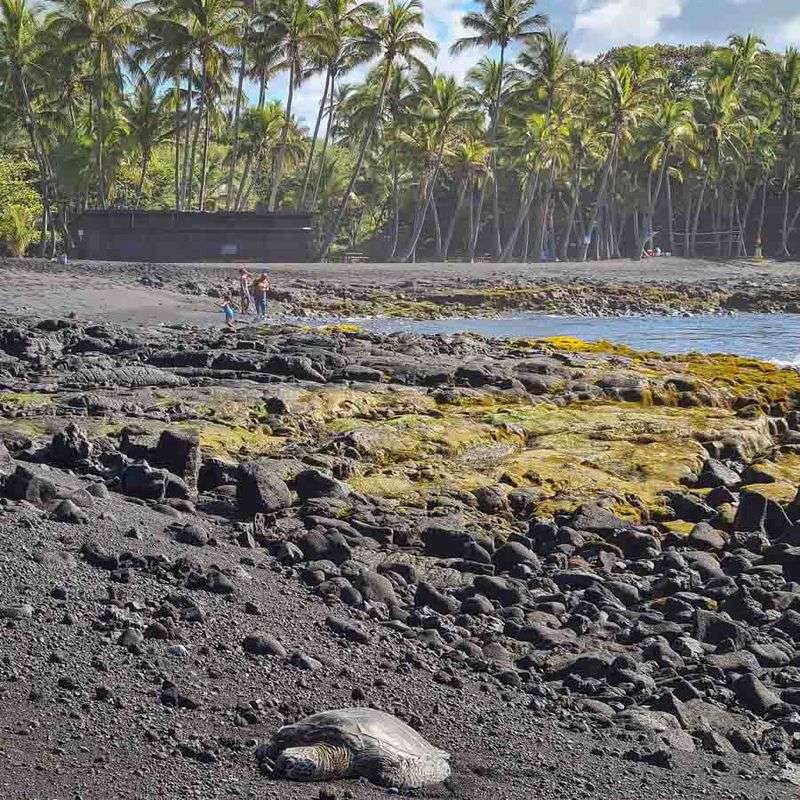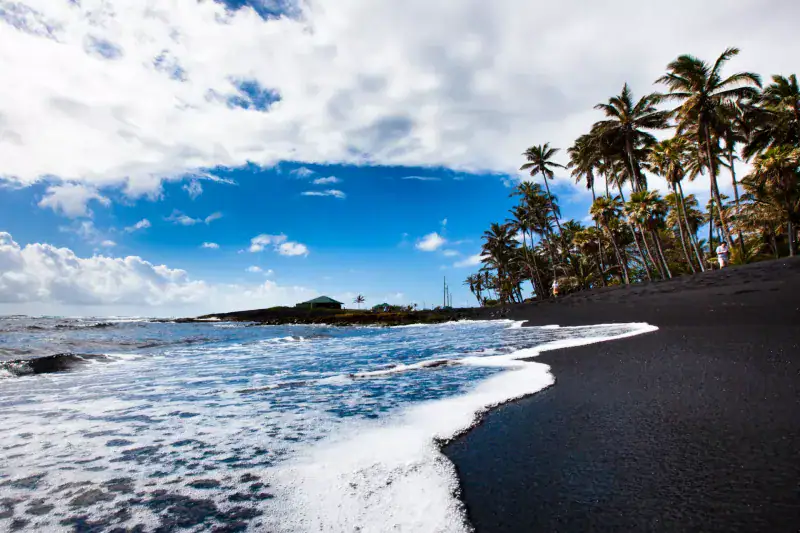Nestled between the bustling towns of Hilo and Kona on Hawaii’s Big Island lies a magical place called Punaluʻu. This coastal gem is famous for its striking black sand beach, where volcanic history meets the Pacific Ocean in spectacular fashion. Travelers from around the world visit this unique spot not only for its remarkable shoreline but also for the chance to see endangered sea turtles basking on the dark, sun-warmed sand.
The Volcanic Origins of Punaluʻu’s Ebony Sands
Mother Nature crafted Punaluʻu’s dramatic shoreline through fiery volcanic processes. When scorching lava from Mauna Loa and Kīlauea volcanoes meets the cool ocean waters, it explodes into tiny fragments that eventually become the beach’s distinctive black sand.
This ongoing geological spectacle has created one of Hawaii’s most photographed beaches. The stark contrast between jet-black sand and turquoise waters creates a landscape that seems almost otherworldly to first-time visitors.
Unlike typical beaches that form over millions of years, black sand beaches are relatively young and temporary in geological terms. The sand particles at Punaluʻu are actually tiny pieces of basalt, giving the beach its signature color and making each grain a tiny fragment of Hawaii’s volcanic soul.
Honu Haven: Sea Turtle Sanctuary
Green sea turtles, locally known as honu, have made Punaluʻu their special resting place. These endangered creatures often haul themselves onto the warm black sand to bask in the Hawaiian sunshine, creating unforgettable moments for lucky beachgoers.
Hawaiian tradition holds these magnificent reptiles as sacred beings, embodying the spirit of wisdom and longevity. Visitors must maintain a respectful distance of at least 10 feet from resting turtles, as federal and state laws protect these gentle creatures.
The contrast of dark-shelled turtles against the black volcanic sand creates a camouflage effect that speaks to their evolutionary connection to this unique environment. Mornings and late afternoons typically offer the best chances to witness these ancient mariners soaking up warmth from the volcanic sands.
Fresh Springs in a Volcanic Paradise
The name “Punaluʻu” translates to “spring diver” in Hawaiian, referring to the freshwater springs that bubble up through the black sand. Ancient Hawaiians valued these springs as vital freshwater sources in an otherwise harsh volcanic landscape.
Cold, fresh water still seeps through the sand in certain spots, creating an unusual sensation for swimmers—warm ocean water on the surface with cool freshwater underneath. This natural phenomenon creates a refreshing layered effect that surprises many visitors wading into the bay.
Historically, these reliable freshwater springs made Punaluʻu an important stopping point for travelers journeying around the island. Today, you might spot the springs by looking for ripples in the sand near the shoreline or feeling the temperature change while wading in the shallows.
Beyond the Beach: Exploring Punaluʻu’s Surroundings
Punaluʻu offers more than just its famous black sand. The surrounding area features lush coconut groves, ancient Hawaiian fishponds, and historic sites that tell stories of the island’s rich cultural heritage.
Nearby stands Kaneʻeleʻele Heiau, an 800-year-old temple that speaks to the spiritual significance of this area. The ruins remind visitors that this landscape held deep meaning for generations of Native Hawaiians long before becoming a tourist destination.
Adventurous travelers can follow the coastal trail from Punaluʻu to Ninole Cove, passing through areas where ancient Hawaiians once lived. The journey between Hilo and Kona offers breathtaking scenery, with the beach positioned perfectly as a midway rest stop for road-trippers exploring the Big Island’s diverse landscapes and microclimates.
Traveler’s Guide to Punaluʻu Beach
Visiting Punaluʻu rewards travelers with one of Hawaii’s most distinctive beaches. Located off Highway 11 between mile markers 55 and 56, the beach offers free parking, restrooms, picnic tables, and barbecue areas for day-trippers.
Swimming here requires caution due to strong currents and rocky shoreline. The northeastern end provides safer entry points, but water shoes are recommended regardless of where you wade in. For the best experience, arrive early morning to avoid crowds and increase your chances of turtle sightings.
Remember that removing black sand or rocks is both illegal and believed to bring bad luck according to Hawaiian tradition. Pack reef-safe sunscreen to protect both your skin and the delicate marine ecosystem. The beach’s unique combination of accessibility and natural wonder makes it a must-stop for anyone traveling between Hilo and Kona.
